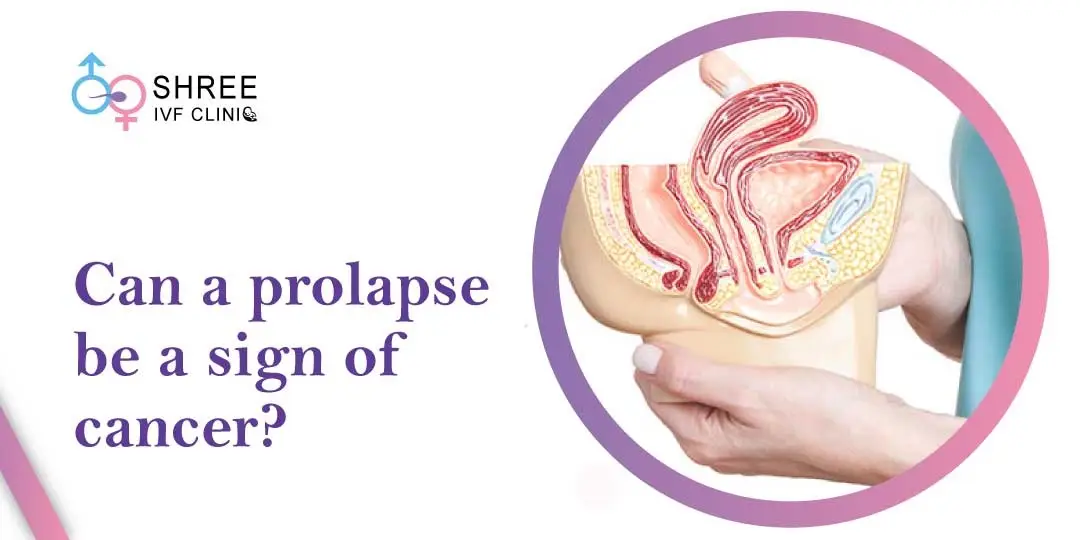How is a Bleeding Prolapse Treated?
UPDATED ON 25 MAR. 2024
Prolapse-related bleeding can be a significant concern for many women, impacting their health and quality of life. When confronted with such a gynaecological issue, it’s essential to have a comprehensive understanding of available treatment options and how to manage these conditions best.
In this in-depth post, we’ll explore the causes, symptoms, and treatment of bleeding prolapse, providing women’s health seekers with valuable insights to effectively address and manage this medical condition.

AUTHOR
Dr Jay Mehta
Scientific Director & IVF Specialist with 10+ years of experience
CONDITION
GET IN TOUCH ON
Understanding Bleeding Prolapse
Before we jump into the treatment, it’s crucial to understand what a bleeding prolapse is. A prolapse occurs when the pelvic floor muscles and ligaments weaken, allowing the pelvic organs to descend more than they should, leading to symptoms such as pelvic pressure, bulging in the vaginal area, and, of course, bleeding.
Prolapse can affect the bladder, uterus, or bowels, and bleeding can result from tissue irritation, which may occur when organs drop down.
Causes of Bleeding Prolapse
The causes of a bleeding prolapse are often related to the weakening of the pelvic floor, which may be due to factors such as pregnancy and childbirth, obesity, menopause, or even heavy lifting and chronic coughing. These actions can lead to the weakening and stretching of the tissues that support the pelvic organs, which in turn can lead to bleeding when the organs prolapse and come into contact with the vaginal walls.
Symptoms to Watch For
Recognizing the symptoms of a bleeding prolapse is essential for early diagnosis and effective treatment. Women should be vigilant for signs such as:
- Vaginal bleeding
- A sensation of fullness or pressure in the pelvis
- Tissue that protrudes from the opening of the vagina
- Discomfort or pain during sexual intercourse
Treatment Options for Bleeding Prolapse
When it comes to treating a prolapse that is causing bleeding, a variety of options are available, ranging from conservative, non-invasive approaches to more complex surgical interventions.
Medication Therapies
Medication can be helpful in managing the symptoms associated with a bleeding prolapse, particularly in cases where heavy bleeding or anaemia is a concern. Iron supplementation to manage anaemia and medications to control excessive bleeding can offer relief.
However, it’s essential to understand that medication does not address the underlying issue of prolapse and is often used in conjunction with other treatments.
Surgery
For more severe cases of bleeding prolapse, especially those where tissue has become necrotic, surgery may be the most viable option. There are various surgical procedures available, including hysterectomy, which removes the uterus, as well as surgeries that aim to repair and support the pelvic floor.
Discussing the various surgical procedures with a gynaecologist is critical to understanding the risks, benefits, and potential outcomes. Factors such as the severity of the prolapse, the patient’s age and health, and the desire for future pregnancies can all influence the decision-making process.
Lifestyle Modifications
In some instances of prolapse, lifestyle modifications can significantly manage symptoms and prevent the condition from worsening. Weight management, avoiding heavy lifting, and kegel exercises to strengthen the pelvic floor muscles can all be beneficial.
Physiotherapy that focuses on strengthening the pelvic floor and practising good bowel habits, including a healthy diet, adequate hydration, and regular exercise, can also be part of a comprehensive treatment plan.
Managing Bleeding Prolapse at Home
Several self-care practices can help manage the symptoms of a bleeding prolapse and improve overall pelvic health. These practices should be considered as part of a holistic approach to treatment.
Self-Care Tips and Practices
- Kegel exercises: Strengthening the pelvic floor muscles can help support the organs and reduce symptoms.
- Diet and exercise: Maintaining a healthy weight and incorporating regular exercise can reduce pressure on the pelvic floor.
- Bowel habits: Avoid straining during bowel movements, and maintain a healthy and high-fibre diet to relieve constipation.
- Vaginal support devices: Pessaries are devices that a healthcare professional can fit to provide physical support to the pelvic organs.
When to Seek Medical Help?
While home care can be effective in managing some symptoms, it’s essential to seek medical support if the bleeding prolapse is causing severe discomfort, persistent bleeding, or a significant impact on daily life. Additionally, a healthcare provider should constantly evaluate new or unexplained bleeding to rule out more severe conditions.
Preventive Measures
Taking steps to prevent prolapse and associated bleeding can significantly reduce the risk and potential severity of the condition. This preventative approach is essential for women with risk factors, such as those who are pregnant or going through menopause.
Strategies to Reduce the Risk of Bleeding Prolapse
- Maintaining a healthy weight
- Practicing stress management to avoid chronic coughing
- Ensuring proper lifting techniques
- Discussing pregnancy and childbirth options with a healthcare provider
Importance of Regular Check-Ups
Regular gynaecological check-ups are essential for the early detection and treatment of pelvic health issues, including prolapse. These visits allow healthcare providers to monitor pelvic health and provide guidance on preventive measures as needed.

4,790+
379K+
finding the right solutions tailored to their specific
circumstances can make all the difference “
Conclusion
A bleeding prolapse can be a concerning condition, but it has several effective treatment options. Understanding the available treatments and how to manage symptoms at home and prevent recurrence is empowering for women affected by this condition.
It’s important to remember that each woman’s experience with a bleeding prolapse is unique, and treatment should be tailored to fit her individual needs and health circumstances. By seeking medical attention and considering the range of treatment options available, women can take control of their health and well-being in the face of this challenging condition.
AUTHOR
Dr Jay Mehta
Scientific Director & IVF Specialist with 10+ years of experience
TREATMENT
CONDITION
CALL US 24/7 FOR ANY HELP
GET IN TOUCH ON
Share Article on
Related Readings
Can Pelvic Organ Prolapse Go Away On Its Own?
Uncover the potential for pelvic organ prolapse (POP) to resolve naturally. Explore symptoms, management options, and factors influencing resolution.
Can Pelvic Organ Prolapse be a Sign of Cancer?
Pelvic Organ Prolapse (POP) doesn’t directly cause cancer, but women with this condition are at a higher risk of developing certain cancers like uterine & gallbladder cancers
Why Does Uterine Prolapse Cause Bleeding?
Heavy periods, bleeding between periods, and postmenopausal bleeding are forms of abnormal vaginal bleeding that can severely impact a woman’s quality of life




